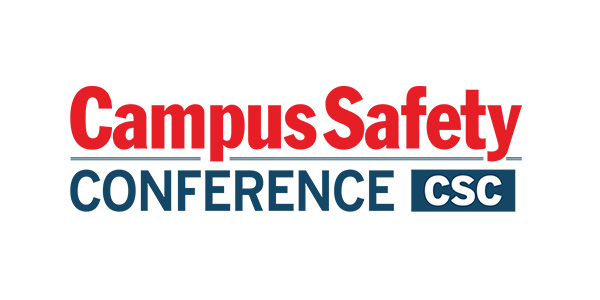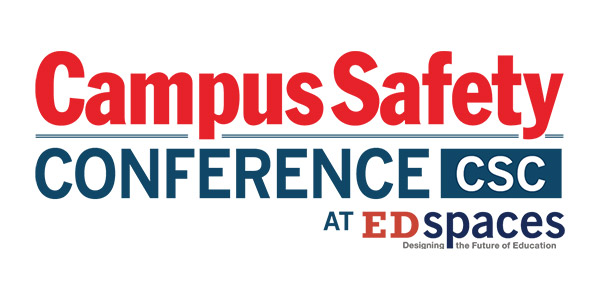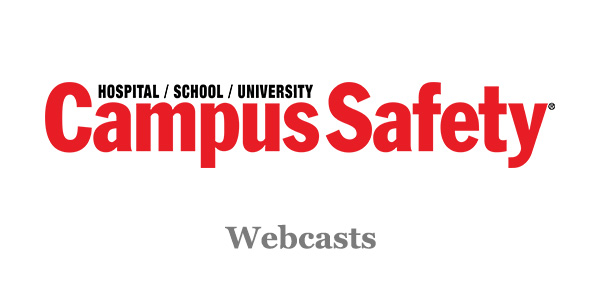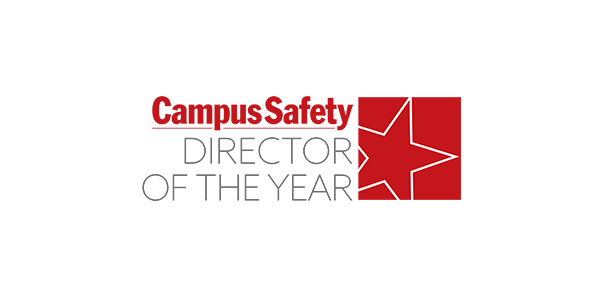Healthcare and school campuses serve as societal keystones, centers of learning, healing, and community. As such, they face unique security pressures, from cyberattacks that could compromise patient treatment or student safety, active threats to physical security, and infrastructure vulnerabilities that threaten operational continuity.
In a world where threats are increasingly complex and unpredictable, healthcare and school campuses have emerged as some of the most vulnerable, and vital, institutions in our society. The stakes are high. Hospitals are lifelines in emergencies, and schools are sanctuaries for the next generation. Yet both types of campuses face a shared challenge: how do they remain secure without compromising their core missions of care and education.
Strategic security planning has become the linchpin in this effort. By proactively identifying risks, engaging multidisciplinary stakeholders, and investing in layered defenses, institutions can not only prevent crises but also ensure operational continuity when they occur. This article explores the critical role of security planning in reinforcing resilience, enhancing public safety, and building a culture of preparedness in our most essential community settings.
The Evolving Threat Landscape at Hospitals, Schools and Universities
Strategic security planning begins with a clear understanding of the threats. These environments are uniquely vulnerable due to their open-access nature, high-population density, and the emotional and psychological states of those who occupy them. In recent years, the threat landscape has grown more complex, requiring a multifaceted approach to safety and security.
Healthcare Under Siege
Healthcare facilities are increasingly becoming hotspots for violence and disruption. According to the U.S. Bureau of Labor Statistics, healthcare workers experience workplace violence at rates significantly higher than other professions. In 2024 alone, over 75% of all workplace assaults occurred in healthcare settings. These incidents range from verbal abuse and harassment to physical attacks, often perpetrated by patients, family members, or even other staff.
Related Articles: New Immigration Policies Threaten U.S. Healthcare System
Several factors contribute to this trend:
- High stress environments: Emergency rooms and psychiatric units are particularly volatile due to the emotional and physical states of patients.
- Understaffing: A shortage of healthcare workers can lead to longer waiting times and increased frustration among patients and visitors.
- Mental health crises: The rise in untreated mental health conditions has led to more unpredictable and sometimes violent behavior.
- Substance abuse: Drug-seeking behavior and withdrawal symptoms can escalate into aggression.
Beyond physical violence, healthcare institutions are also prime targets for cyberattacks. Ransomware attacks on hospitals have surged, with hackers exploiting outdated systems and overburdened IT departments. These attacks can cripple operations, delay patient care, and compromise sensitive data.
Schools in the Crosshairs
Schools continue to grapple with a wide array of security threats. The most visible and devastating of these are school shootings. However, the threat landscape extends far beyond active shooter scenarios. Key concerns include:
- Bullying and harassment: Both in-person and cyberbullying can lead to severe emotional distress and, in some cases, violence.
- Mental health issues: Rising rates of anxiety, depression, and suicidal ideation among students have created new challenges for school safety teams.
- Vandalism and property damage: Acts of destruction can signal deeper behavioral issues and create unsafe environments.
- Unauthorized access: Open campuses and lax visitor policies can allow intruders to enter school ground unnoticed.
In addition, schools are increasingly vulnerable to digital threats. Cyberbullying data breaches and the misuse of surveillance technologies raise concerns about student privacy and digital safety.
The Psychological Toll of Insecurity
Beyond the immediate dangers, the perception of insecurity can have lasting psychological effects. In healthcare settings, fear of violence can lead to burnout, absenteeism, and high turnover among staff. In schools, students who feel unsafe are less likely to attend regularly, engage in learning, or form positive relationships with peers and teachers.
Security planning must therefore address not only the prevention of incidents but also the cultivation of a sense of safety and well-being. This requires a shift from reactive to proactive strategies, grounded in empathy, inclusivity, and community engagement.
Foundations of Strategic Security Planning
Strategic security planning is a tailored, evolving framework that aligns with the unique needs, values, and vulnerabilities of each institution. Whether a hospital or a school, the foundation of effective security lies in a structured, inclusive, and forward-thinking approach. In this section, we explore the core components that form the bedrock of a robust security strategy.
The Security Master Plan
At the heart of strategic security planning is the Security Master Plan (SMP), a comprehensive document that outlines an institution’s long-term vision for safety and security. The SMP serves as a blueprint, guiding decision-making, resource allocation, and policy development. Key elements of a Security Master Plan include:
- Mission Alignment: Security goals must support the institution’s broader mission, whether it is delivering patient-centered care or fostering a safe learning environment.
- Risk Assessment: A thorough analysis of internal and external threats, vulnerabilities, and potential consequences.
- Gap Analysis: Identifying discrepancies between current security measures and desired outcomes.
- Strategic Objectives: Clear, measurable goals that address identified risks and align with institutional priorities.
- Implementation Roadmap: A phased plan for deploying innovative technologies, policies, and training programs.
- Evaluation Metrics: Tools for measuring effectiveness and ensuring continuous improvement.
The SMP should be a living document, reviewed and updated regularly to reflect changes in the threat landscape, technology, and institutional needs.
Risk Assessment and Threat Analysis
A foundational step in strategic planning is conducting a comprehensive risk assessment. This involves identifying potential threats, evaluating their likelihood and impact, and prioritizing them based on severity.
For healthcare facilities, risks may include:
- Aggressive patients or visitors
- Theft of medical equipment or pharmaceuticals
- Cyberattacks
- Natural disasters affecting critical infrastructure and operations
For schools, risks might involve:
- Active shooter scenarios
- Bullying and student violence
- Unauthorized access to campus
- Data breaches involving student information
Risk assessments should be data-driven and inclusive, incorporating input from security professionals, staff, students, patients, and community stakeholders.
Policy and Procedure Development
Once risks are identified, institutions must develop clear, enforceable policies to mitigate them. These policies should cover:
- Access control protocols
- Visitor management procedures
- Emergency response plans
- Cybersecurity standards
- Incident reporting and investigation
Related Article: The Other AI: ‘Active Involvement’ by Humans Is Critical in School Security
Policies must be communicated effectively and supported by training to ensure consistent implementation. Importantly, they should be reviewed regularly and revised in response to new threats or lessons learned from past incidents.
Stakeholder Engagement and Governance
Security planning cannot occur in a vacuum. It requires the active participation of diverse stakeholders, including:
- Administrators and leadership
- Security personnel
- IT and facilities teams
- Teachers, clinicians, and frontline staff
- Students, patients, and families
- Local law enforcement and emergency responders
Establishing a security governance committee can help coordinate efforts, ensure accountability, and foster a culture of shared responsibility. This committee should meet regularly to review progress, address concerns, and adapt strategies as needed.
Training and Capacity Building
Even the most sophisticated security systems are only as effective as the people who operate them. Ongoing training is essential to build awareness, confidence, and competence among staff and stakeholders.
Training programs should include:
- De-escalation techniques
- Emergency response drills
- Cyber hygiene practices
- Cultural competency and trauma-informed care
- Recognizing and reporting suspicious behavior
In schools, student education is equally important. Age-appropriate safety lessons can empower students to take an active role in maintaining a secure environment.
Integration with Broader Institutional Planning
Security planning should not be siloed—it must be integrated into broader institutional strategies, including:
- Capital improvement plans
- Technology upgrades
- Health and wellness initiatives
- Equity and inclusion efforts
This integration ensures that security measures enhance, rather than hinder, the institution’s core mission and values.
Healthcare and School Physical Security: Building the First Line of Defense
Physical security is the most visible and immediate layer of protection for healthcare and school campuses. It encompasses the design, infrastructure, and operational protocols that control access, monitor activity, and deter threats. While technology plays a crucial role, effective physical security also depends on thoughtful planning, human oversight, and a deep understanding of the environment’s unique needs.
Design for Defense: The Role of CPTED
A foundational principle in physical security is Crime Prevention Through Environmental Design (CPTED). This approach uses architectural and environmental design to reduce opportunities for crime and enhance natural surveillance and is often overlooked as part of the security plan.
Related Article: CISA Releases New Venue Security Guidance
Key CPTED strategies include:
- Natural access control: Directing the flow of people through clearly defined entrances and exits.
- Territorial reinforcement: Using signage, landscaping, and fencing to establish ownership and boundaries.
- Natural surveillance: Maximizing visibility through open sightlines, lighting, and window placement.
- Maintenance: Keeping facilities clean and well-maintained to signal active oversight and discourage vandalism.
CPTED is especially effective when integrated into the initial stages of campus planning or renovation projects.
Integrating Technology with Physical Infrastructure
Modern physical security systems increasingly rely on smart technologies that integrate with digital platforms. Examples include:
- AI-powered surveillance: Cameras equipped with facial recognition or behavior analysis can detect anomalies in real time.
- Smart locks and sensors: Doors can be remotely locked or unlocked, and sensors can detect forced entry or propped doors.
- Mobile access control: Staff can use smartphones to unlock doors, receive alerts, or report incidents.
- Environmental monitoring: Sensors detect smoke, gas leaks, or water damage, triggering automated responses.
These technologies enhance situational awareness and response times but must be deployed with attention to privacy, equity, and cybersecurity.
Maintenance and Continuous Improvement
Physical security is not static. Regular maintenance, inspections, and upgrades are essential to ensure systems remain functional and effective. Institutions should:
- Conduct annual security audits
- Evaluate emergency systems regularly
- Replace outdated equipment
- Solicit feedback from staff and users
A proactive maintenance culture not only improves safety but also builds trust and confidence among stakeholders.
Campus Emergency Preparedness and Response
No matter how robust a security system may be, emergencies can and do happen. Whether it’s an active shooter, a natural disaster, a medical emergency, or a cyberattack, the ability to respond swiftly and effectively can mean the difference between chaos and control, injury, and safety, or even life and death. Emergency preparedness is a cornerstone of strategic security planning, ensuring that institutions are not only protected but also resilient.
The Importance of a Comprehensive Emergency Plan
A well-developed Emergency Operations Plan (EOP) outlines how an institution will prepare for, respond to, and recover from various emergencies. It should be:
- All-hazards: Addressing a wide range of potential incidents, from fires and floods to violence and pandemics.
- Scalable: Adaptable to incidents of varying size and complexity.
- Collaborative: Developed with input from internal stakeholders and external partners.
- Regularly updated: Reflecting changes in infrastructure, personnel, and threat assessments.
The EOP should clearly define roles and responsibilities, communication protocols, evacuation routes, shelter-in-place procedures, and reunification plans.
Drills, Exercises, and Simulations
Practice is essential to ensure that emergency plans are more than just documents—they must be actionable and familiar to everyone involved.
Types of preparedness activities include:
- Tabletop exercises: Discussion-based sessions where staff walk through hypothetical scenarios to evaluate decision-making and coordination.
- Functional exercises: Simulated events that assess specific capabilities, such as activating a lockdown or deploying emergency communications.
- Full-scale drills: Realistic, hands-on simulations involving staff, students, or patients, and first responders.
In schools, drills should be age-appropriate and trauma-informed. For example, active shooter drills should avoid graphic simulations that could cause distress, especially for younger students.
In healthcare settings, drills may include:
- Mass casualty incidents (MCIs)
- Evacuation of critical care units
- Cyberattack response scenarios
- Hazardous material spills
Emergency Communication Systems
Effective communication is the backbone of any emergency response. Institutions must be able to quickly disseminate accurate information to staff, students or patients, families, and emergency responders.
Key components of a robust communication system include:
- Mass notification systems: Platforms that send alerts via text, email, phone, and public address systems.
- Duress buttons and panic alarms: Installed in classrooms, nurses’ stations, and reception areas for immediate alerts.
- Two-way radios: Reliable communication for security personnel and administrators, especially when cellular networks are down.
- Digital signage and intercoms: Used to broadcast instructions during lockdowns or evacuations.
- Social media and websites: Channels for public updates and instructions during prolonged incidents.
Clear, consistent messaging reduces confusion, prevents panic, and facilitates coordinated action.
Coordination with First Responders
Strong relationships with local law enforcement, fire departments, EMS, and emergency management agencies are essential. These partnerships ensure faster response times, shared situational awareness, joint training and exercises, and access to specialized resources (e.g., SWAT, HAZMAT).
Prior to an emergency, institutions should provide first responders with campus maps and floor plans, access codes or master keys, contact lists for key personnel, and similar information needed for emergency response. On the day of an emergency, institutions should have ready real-time information on vulnerable populations (e.g., non-ambulatory patients or students with disabilities).
Pre-plan where and how to establish an Emergency Operations Center (EOC), a centralized hub for managing response efforts and coordinating with external agencies.
Recovery and Continuity Planning
The aftermath of an emergency is just as critical as the response. Institutions must have plans for:
- Business continuity: Restoring essential functions such as patient care, instruction, and IT systems.
- Mental health support: Providing counseling and psychological first aid to those affected.
- Damage assessment and insurance claims
- Debriefing and after-action reviews: Identifying lessons learned and areas for improvement.
Recovery planning ensures that institutions can bounce back quickly and emerge stronger from adversity.
Collaboration and Engagement
Security is not solely the responsibility of a single department or a handful of professionals; it is a shared commitment that thrives on collaboration. In both healthcare and educational settings, building strong partnerships with internal stakeholders and external community members is essential for creating a resilient and responsive security ecosystem. Strategic security planning must therefore prioritize engagement, transparency, and cooperation at every level.
Internal Collaboration: Breaking Down Silos
Effective security planning requires input and coordination across multiple departments and disciplines. Internally, this means fostering collaboration among:
- Security and facilities teams: To align physical infrastructure with safety protocols.
- IT departments: To integrate cybersecurity with physical security systems.
- Human resources: To ensure staff training, background checks, and wellness support.
- Clinical or academic leadership: To align security measures with institutional missions and values.
- Frontline staff: To gather insights from those who interact daily with patients, students, and visitors.
Creating interdisciplinary security committees or task forces can help break down silos, promote shared ownership, and ensure that security strategies are practical, inclusive, and mission aligned.
Partnerships with First Responders and Public Agencies
External partnerships are vital for effective emergency response and long-term security planning. Key collaborators include:
- Local law enforcement: For threat assessments, incident response, and joint training.
- Fire departments and EMS: For evacuation planning, medical emergencies, and hazardous materials incidents.
- Emergency management agencies: For disaster preparedness, resource coordination, and recovery support.
- Public health departments: For pandemic response, mental health services, and community outreach.
These partnerships should be formalized through memoranda of understanding (MOUs), joint exercises, and regular communication. Institutions should also participate in community threat assessment teams and regional safety coalitions to stay informed and aligned with broader public safety efforts.
Measuring Success and Continuous Improvement
Security is not a static achievement, it is a dynamic, ongoing process. As threats evolve, technologies advance, and institutional needs shift, so must the strategies that protect healthcare and educational campuses. Measuring the effectiveness of security initiatives and committing to continuous improvement ensures that institutions remain resilient, responsive, and aligned with best practices.
Defining Success in Security
Success in security is multifaceted. It’s not just about the absence of incidents, but also about:
- Preparedness: How ready is the institution to respond to emergencies?
- Responsiveness: How quickly and effectively are incidents managed?
- Resilience: How well does the institution recover and adapt after a crisis?
- Perception: Do staff, students, patients, and families feel safe and supported?
- Compliance: Are legal and regulatory requirements being met?
These dimensions require both quantitative and qualitative metrics to assess progress and guide decision-making.
Key Performance Indicators (KPIs)
Institutions should establish clear, measurable Key Performance Indicators (KPIs) to track the effectiveness of their security programs. Examples include:
- Incident frequency and severity: Number and type of security incidents reported over time.
- Response times: Time taken to respond to alarms, emergencies, or service calls.
- Drill participation and performance: Attendance rates and outcomes of emergency exercises.
- System uptime and reliability: Performance of surveillance, access control, and communication systems.
- Training completion rates: Percentage of staff who have completed required security training.
- User satisfaction: Feedback from surveys or focus groups on perceptions of safety and security.
These KPIs should be reviewed regularly and benchmarked against industry standards or peer institutions.
Audits and Assessments
Regular security audits and vulnerability assessments are essential for identifying gaps, inefficiencies, and emerging risks. These evaluations may include:
- Physical security walkthroughs
- Penetration testing of IT systems
- Policy and procedure reviews
- Compliance checks with HIPAA, FERPA, OSHA, and other regulations
- Third-party evaluations for unbiased insights
Findings from audits should be documented, prioritized, and addressed through corrective action plans.
Adapting to Change
Security strategies must be agile and adaptable. Institutions should stay informed about:
- New threats (e.g., emerging cyberattack methods, social media trends)
- Technological advancements (e.g., AI, biometrics, cloud platforms)
- Regulatory changes (e.g., data privacy laws, emergency preparedness standards)
- Sociocultural shifts (e.g., student activism, public health crises)
Scenario planning and tabletop exercises can help institutions anticipate and prepare for future challenges.
Strategic Security Planning Creates a Safer, Stronger Future
In today’s complex and often unpredictable world, the safety of healthcare and educational campuses cannot be left to chance. Strategic security planning is a necessity. It is the framework through which institutions can anticipate threats, respond effectively to emergencies, and foster environments where healing and learning can flourish.
Throughout this article, we’ve explored the many dimensions of campus security:
- The evolving threat landscape that demands vigilance and adaptability.
- Foundational planning processes that align security with institutional missions.
- Some of the safeguards that form the first lines of defense.
- Effective baseline emergency preparedness strategies to help ensure readiness and resilience.
- Collaborative partnerships that strengthen community ties and response capabilities.
- Metrics that drive continuous improvement and accountability.
But perhaps the most important takeaway is this: security is not just about preventing harm; it’s about enabling success. When students feel safe, they can focus on learning. When patients feel protected, they can focus on healing. When staff feel supported, they can focus on serving others.
Strategic security planning is a commitment to care. It is a promise to protect not only the physical spaces we occupy but also the people, values, and futures they represent. By investing in thoughtful, inclusive, and forward-looking security strategies, healthcare and educational institutions can build not just safer campuses, but stronger communities.
Mary A. Gates, CFSSP, CHPA-III, is President of GMR Security Consulting Group. She is a physical security professional with experience advising on infrastructure risk mitigation and emergency response planning. She writes regularly about public safety, infrastructure resilience, and leadership in crisis management.
Note: The views expressed by guest bloggers and contributors are those of the authors and do not necessarily represent the views of, and should not be attributed to, Campus Safety.
Sources Used for Portions of this Article
– U.S. Department of Homeland Security, “Soft Target Security Strategy” (2023)
– IBM, Cost of a Data Breach Report (2024)
– K-12 School Shooting Database, Naval Postgraduate School (2024)
– American Hospital Association, Workforce Violence Data Brief (2023)
– Joint Commission Sentinel Event Alert 59 (2022)
– Sandy Hook Promise Annual Impact Report (2023)
– IAHSS Foundation Research on Hospital Violence Trends (2024)







